
Features
Structural
Training
Back to Basics: The minuteman hose load
Advancing hose is an important part of our jobs when we are implementing an aggressive fire attack. As mentioned in November, there is a saying in the fire service, “as the first line goes, so goes the fire”. Getting that first line off the engine and into position is vital to the outcome of our fire attack.
December 5, 2008
By Mark van der Feyst
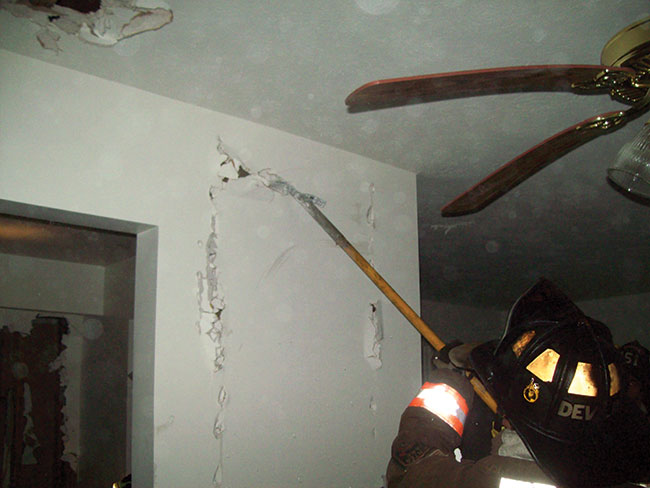 |
| Photo 1: Photo by Mike Gutschon |
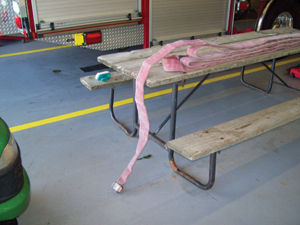 |
| Photo 1-A: Photo by Mark van der Feyst |
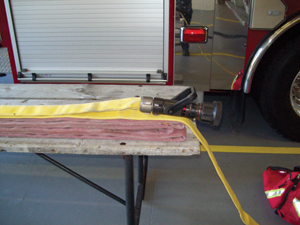 |
| Photo 1-B: Photo by Mark van der Feyst |
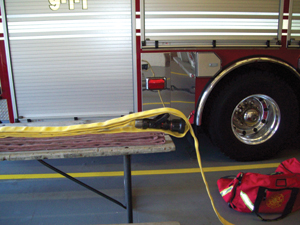 |
| Photo 1-C: Photo by Mark van der Feyst Advertisement
|
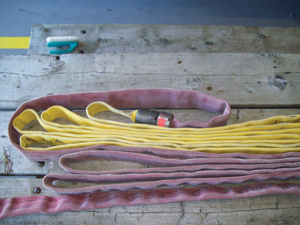 |
| Photo 1-D: Photo by Mark van der Feyst
|
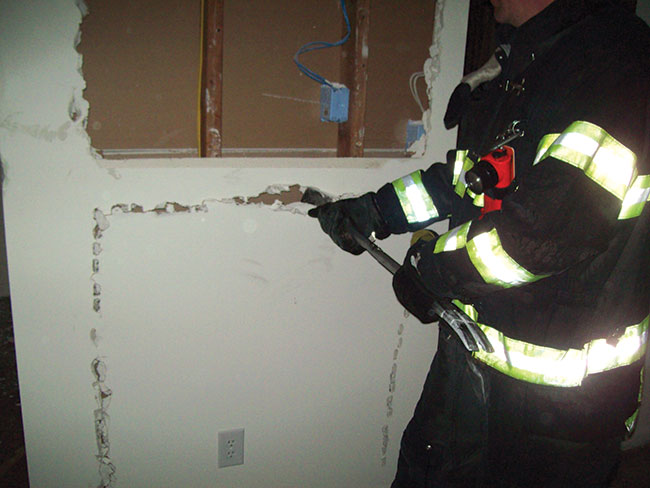 |
| Photo 2: Photo by Mike Gutschon |
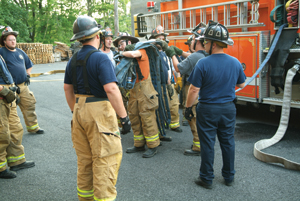 |
| Photo 3: Photo by Mike Gutschon |
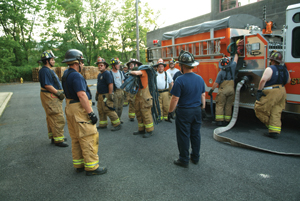 |
| Photo 4: Photo by Mike Gutschon |
Advancing hose is an important part of our jobs when we are
implementing an aggressive fire attack. As mentioned in November, there
is a saying in the fire service, “as the first line goes, so goes the
fire”. Getting that first line off the engine and into position is
vital to the outcome of our fire attack. To aid us in getting our lines
in place, we have different hose loads that we can configure on our
engines. One such load is the minuteman hose load. This hose load is
designed to help firefighters get the initial attack line in place with
ease for any type of operation – residential, commercial or high rise.
Whether you are packing a 1.75-inch or a 2.5-inch hose line, the minuteman hose load takes no time to load. As with any project, set up is the most important part of the operation. With the set up properly done, the rest of the operation will flow easily. The minuteman needs to be loaded correctly and set up correctly in order for it to work effectively and efficiently. See photo 1.
To load a minuteman hose load, you will need to first determine if you want to load 150-foot or 200-foot preconnect. For the 150-foot preconnect, you will need three sections of hose; for the 200-foot preconnect, you will need four sections of hose. The first section of hose will be loaded as you would normally for any flat load. The added step is to not attach the male coupling to the next section of hose, but rather leave it hanging on the opposite side of the load. This male coupling will be attached to the female coupling at the very end of the load. (See photo 1-A).
Next, you will need to attach your nozzle to the second section of hose and start to feed the line by placing the nozzle at the edge of the hose load and start to underfeed the line to the other edge of the load. (See photo 1-B).
Once you have underfed the first lay of the second section, you will then wrap the line around the nozzle and continue to flat load the rest of the line. (See photo 1-C).
If you are double stacking the load, you will need to create an identical loop next to the nozzle. This will give you a handle to pull on to advance the line. From this point, the rest of the load will be a simple flat load.
Continue to load the hose until all sections are loaded. At the end of your last section, you will attach the female coupling to the first male coupling that was left hanging on the opposite side of the hose load. You are now wrapping the back of the hose load with the first section of hose. (See Photo 1-D).
The best method for loading the minuteman hoseload is to double stack it rather than single stacking. A double stack hose load will be easier to handle by one firefighter than a single-stack load. If you are loading 150 feet of preconnect, then you will have 100 feet of hose on your shoulders; not bad if you have a single stack, but it will tend to fall over if you don’t have a firm grasp on it. If you are loading 200 feet of preconnect , then you will have 150 feet of hose on your shoulder. You will definitely want to have a double stack load for this.
One firefighter can pull the mintueman hose load and advance the line. It is designed to unload itself as you advance toward the fire. The top part of the hose load will start to flake off because it is actually the bottom first section of hose that is connected to the discharge. This unique design allows us to deploy the hose while we are advancing to the structure.
Notice in photo 2, as the firefighter is advancing the hose line, the top part of the line starts to flake off as he is advancing. Eventually the hose load will be flaked out, leaving the nozzle in the firefighter’s hand ready for attack. This method of advancing a hose line allows for one firefighter to advance the line, the officer to conduct size up, the driver to get the pump in gear and the other firefighter (if there is a fourth) to aid in any other way.
The majority of our fire attacks are residential fires. The minuteman hose load is perfect for residential fires. It is also perfect for highrise operations. If you don’t pack a highrise hose pack on your engine, then the minuteman hose load becomes your highrise kit. As you can see in photo 2, the last coupling of the first 50 feet of hose becomes exposed. The firefighter is now able to uncouple the hose line from the initial 50-foot section and ends up with a 100-foot to 150-foot high-rise kit. (See photo 3 and 4.)
From here, this firefighter is able to walk up to any floor in a highrise and connect to a standpipe system. The firefighter must not forget to grab a spanner wrench and a 2.5-inch gated wye so that another attack line can be added.
A firefighter is also able to advance a minuteman into a structure and up stairs to the second or third storey. If you wanted to advance a dry line to an upper floor, then the minuteman will allow you
to accomplish this. The same can be done for advancing a line down a set of stairs.
In order for this hose load to become effective, firefighters must be trained on a consistent basis for both loading and advancing. The more familiar you become with this hose load, the better it will work for you.
Mark van der Feyst began his career in the fire service in 1998 with the Cranberry Township Volunteer Fire Company, Station 21, in Pennsylvania. He served as a firefighter and training officer for four years. From there, he joined the Mississauga Fire & Emergency Services, where he served for three years as a firefighter and shift medical instructor. Presently, he works for the City of Woodstock Fire Department.
Print this page